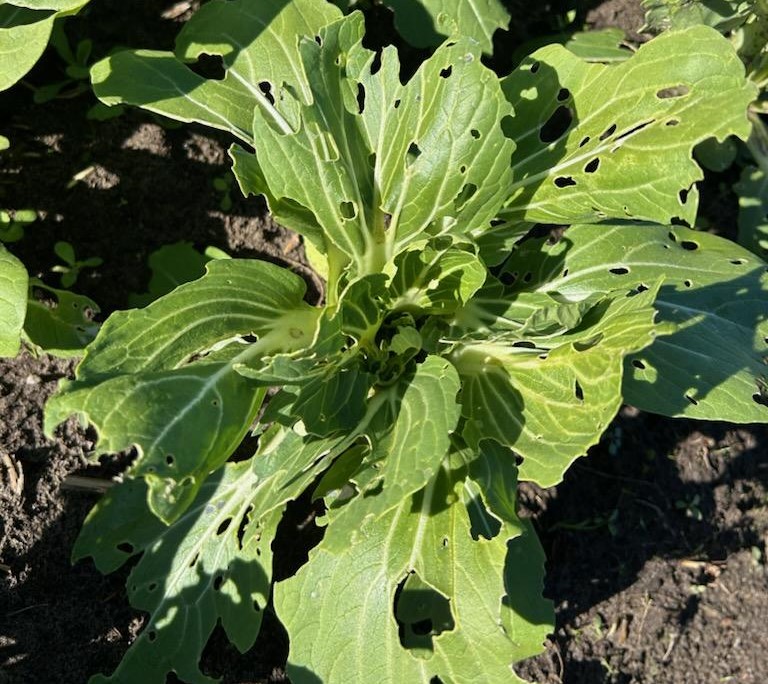
Weekly Field Update
Clemson Extension agents provide updates in The South Carolina Grower this week about the status of various crops being produced throughout the state.
Coastal Region
Zack Snipes
- I am seeing lots and lots of leaf lesions on strawberries out in the counties. I can’t stress enough how critical it is to get out in your field and send in samples to the lab if you find anything suspicious. Neopestalotiopsis is a serious disease and can completely wipe out your entire field. NOW is the time to identify and manage this disease.
- I am seeing lots of leaf damage in Asian-type greens such as Bok choi, tat soi, Nappa cabbage, and mustard. Yellow-margined leaf beetles (YMLB) are the culprit and are very tough, if not impossible, to control. The pest feeds in both the larval and adult stage and will make your greens look like Swiss cheese. The larvae look like “worms” but are a beetle. Bt will NOT work on this pest, because they are beetles and not lepidopteran. Bt only works on lepidopteran pests. The larvae of the YMLB will have six legs or three pairs of legs. They hide in the crevices of the plant, so contact insecticides must be sprayed at high volumes and pressure to get into the nooks and crannies to kill them. Row covers can be effective in managing this pest on new ground. If you have grown any Asian-type greens in a particular field before and have had this pest, then you will have the pest again.
Midlands
Sarah Scott
- A question that has been coming up frequently in the past few weeks has been, “what’s the latest on chlorpyrifos?” Check out the University of Georgia (UGA) Peach Blog for the latest Chlorpyrifos update, as of February.
- A reminder to those needing paraquat safety training that you must re-take the training every three years. Be sure to check the status of your certificates and update as necessary. There is a $25 charge for this. You can find the training at https://npsec.us/paraquat.
- A few peach varieties are starting to show signs of bloom. We are on target to reach our required chill hours for all varieties grown on the Ridge. It is an El Niño year, so it is predicted that we could have some crazy weather/cold snaps this spring that could affect the crop. We will continue to monitor things and hope for a strong production year.
Pee Dee
Brittney King
- We had a good amount of rain in the Pee Dee (Sunday) night, and it looks like we will continue to have rain throughout (Monday).
- I have seen many leaf spots on strawberry plants, mainly caused by Gnomonia. I have also seen Botrytis starting where previous cold damage had taken place. There are a few cases of Neopestalotiopsis, for which the current best treatment is rotating Switch and Thiram and using Quaternary ammonium to wash vehicles and equipment to help prevent disease carry-over from another field. Ensure that no one works in the field when the plants are wet, as this is an easy way to spread diseases between fields. I have seen some instances where planting was not done correctly, and the plug did not completely root in. The strawberries were planted with a stake, which made the planting hole too wide, causing the plant to wobble in the planting hole. The strawberry plug was never rooted in, which made the plant weak and susceptible to disease. We cannot stress enough the importance of starting with success on your strawberry plants. Ensuring your plants are disease-free and planted correctly can prepare you for a more successful and less stressful season. I have seen a big difference in disease pressure between fields that did use a pre-plant fungicide dip and fields that did not. It is an easy step that can save you from a lot of stress further into the season.
- Brassicas, chives and garlic are looking good. There are some instances of black rot where it was already an issue in previous seasons. Planting a brassica crop right after or before another brassica crop puts you at risk for black rot and other brassica pathogens. The black rot bacteria can survive on the leaves of the previous brassica crop, so make sure to disk crop debris soon after harvest to prevent further spread.
- Muscadine and blueberry pruning are underway. We need to start fertilizing muscadines in March and blueberries at bud break (mid-March). Ensure your blueberry fertilizer’s nitrogen composition is from an ammoniacal source like urea and NOT nitrate. Nitrate fertilizers can build up in the leaves of the blueberry plant and cause toxicity.
- I want to remind everyone about the Pee Dee Vegetable Production Meeting on Feb. 29, 1 p.m. to 3 p.m. at PDREC. There will be a free lunch before the meeting, from 12:15 p.m. to 1 p.m. Pesticide credits are offered for attending the meeting. Please let me know if you are attending and if you have any dietary restrictions by Feb. 22. Feel free to send an email to bking7@clemson.edu or call 843-519-2402.









